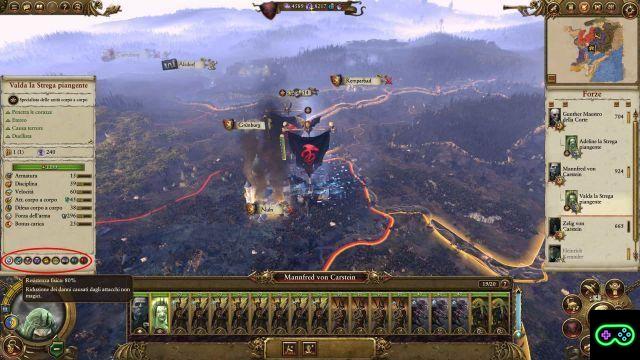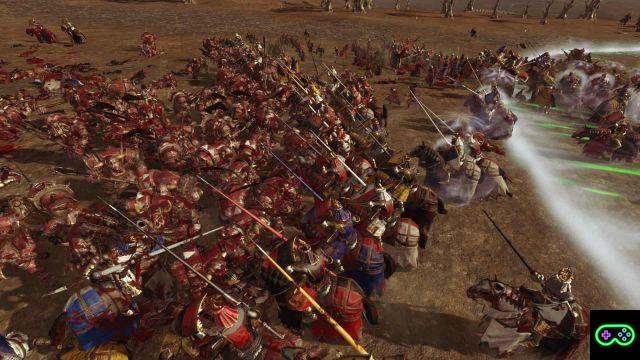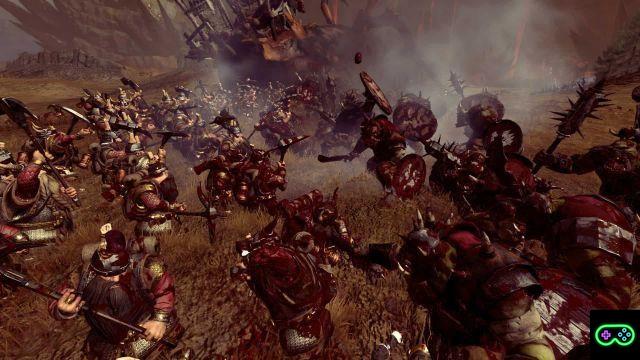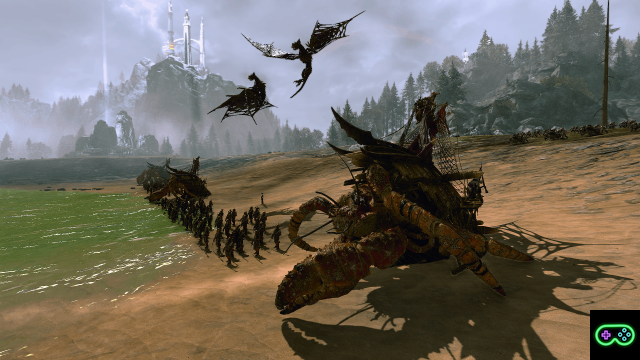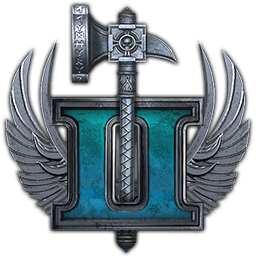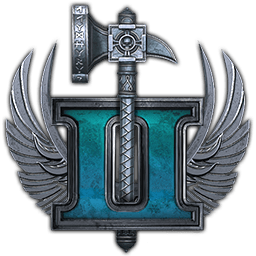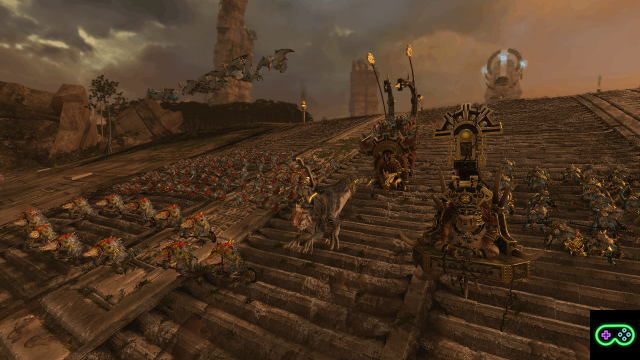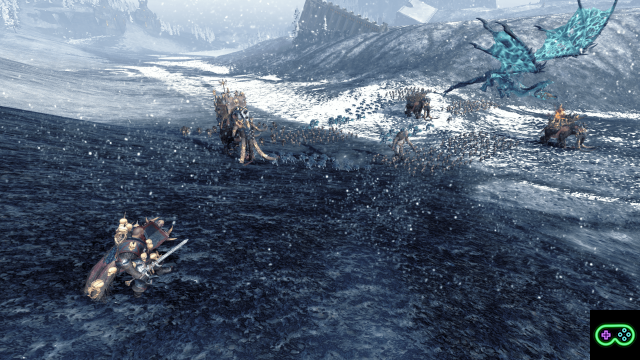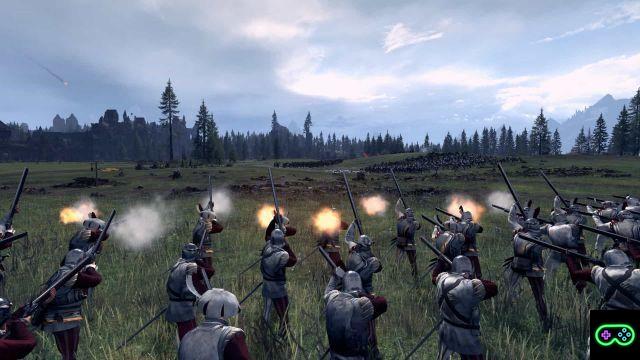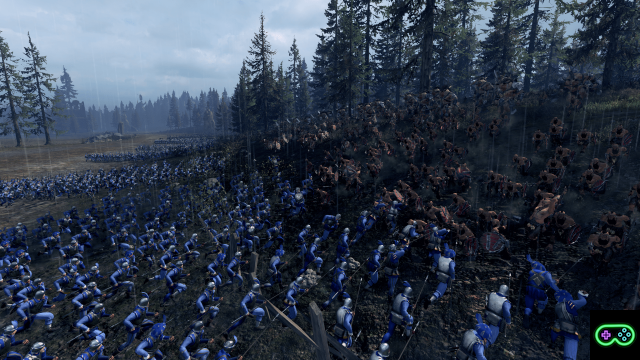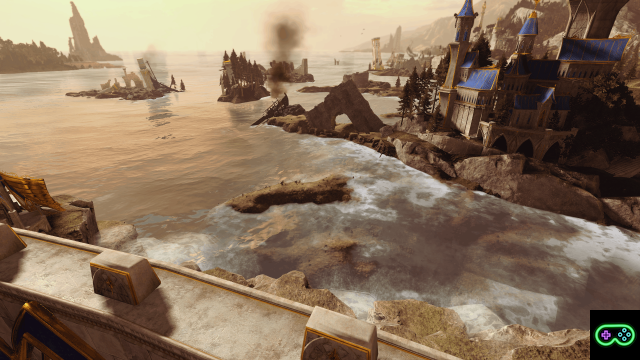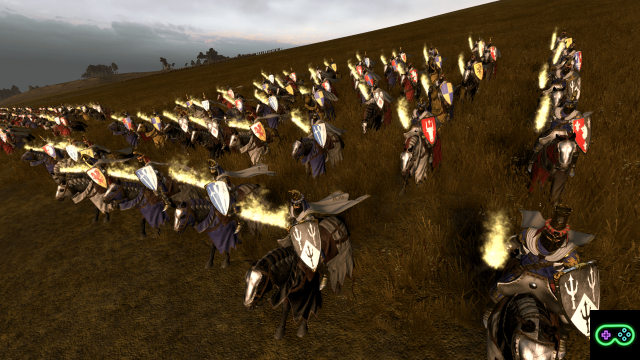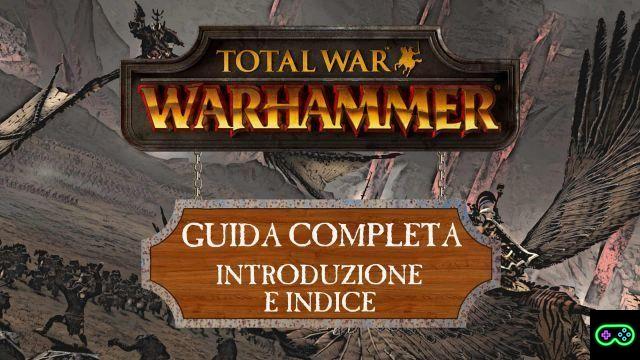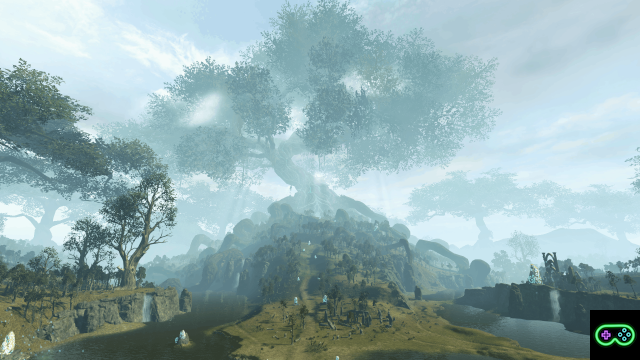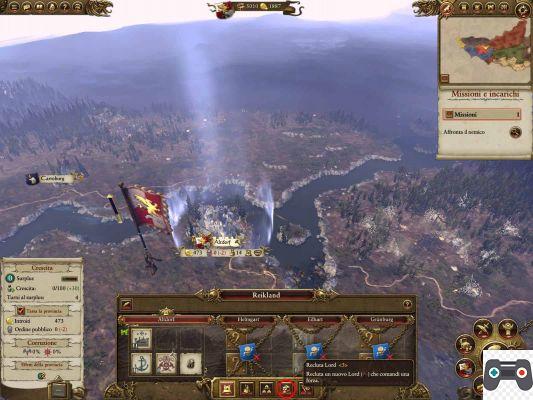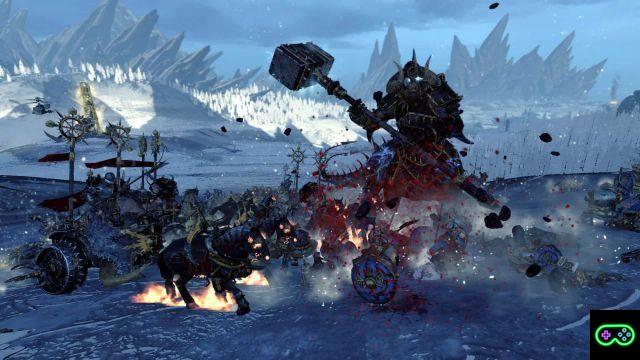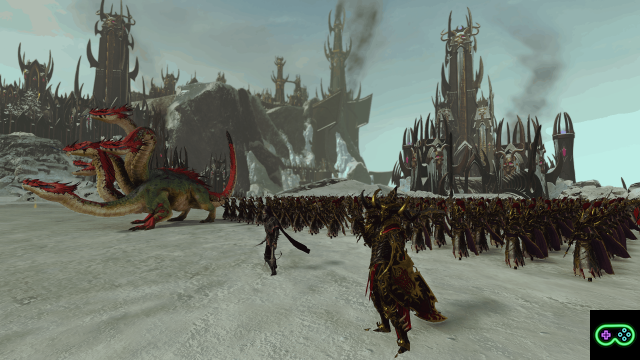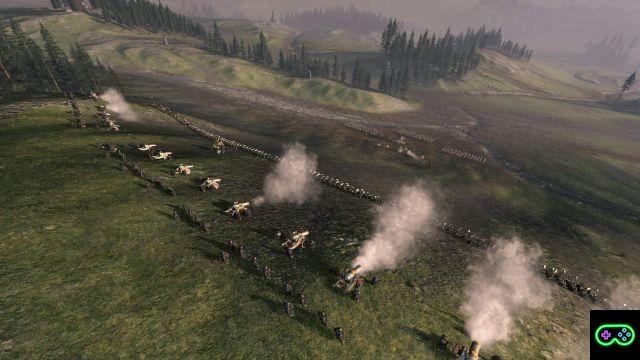- Click here to read the other pages of the guide -
Tomb King
Millennia before the advent of Sigmar, founder of the Empire, the greatest human kingdom was that of Nehekhara, which stretched along all the deserts north of the Southern Lands.
The rulers of these kingdoms, unified by Settra the Imperishable, obsessed with mortality, established the funeral cult, a doctrine that preached the resurrection of the dead to immortalize the power of their lords.
Following the enormous power arising from the conflict between the Tomb Kings and Nagash, the Supreme Necromancer, these arose before their time as mummies, and without having full use of their powers.
Now, the ancient rulers of the desert find themselves competing with all the more modern factions for territorial dominance, and to regain the glories of the past.
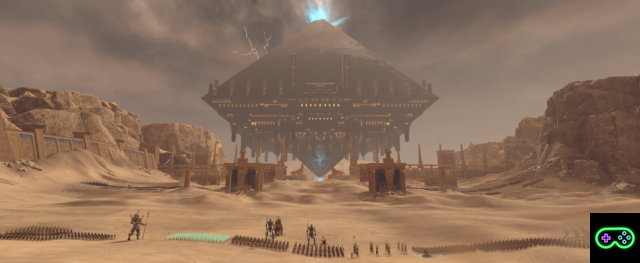
Armies of Tomb Kings make innovative use of death magic to effortlessly summon legions of skeletal warriors and animate mammoth constructs to unleash in battle.
The composition of the armies of this faction presents great changes compared to the other factions of the Total War series, including the zero cost of recruiting and maintaining for all troops and the limit on the amount of deployable armies.
Strategy in the Campaign
Characteristic traits of the faction:
- Call to Unlife:
The funeral cult established in ancient times by the clergy of Nehekhara had as its objective the resurrection of the great rulers buried in the pyramids and of all their servants.
The recruitment of troops, lords, heroes, as well as the constructs they bring into battle will always be free and the troops will never have maintenance costs. Unlike other factions, however, the maximum amount of armies and units of each type will be limited, with the exception of lower-quality basic troops (which will be unlimitedly recruitable).
The buildings of the higher tier of the military branch, as well as those of the advanced military branch, in addition to unlocking units of greater value (similar to what happens for all the other factions), will increase the number of units available simultaneously. Military development therefore takes on completely different connotations from those of other factions such as the Empire or the High Elves, for which it is sufficient to build such buildings in a province where they can compose all their armies. For the duration of the campaign it will be necessary to build a progressively greater number of identical military buildings in all their territories, in order to ensure a correct supply of troops.
- Nagash books
The Tomb Kings do not care about the Vortex conflict and do not contribute to the celebration of the relative rites. The victory condition of these factions is to obtain 5 of the 8 books of the High Necromancer Nagash around the world (the ninth book of Nagash is in the possession of the legendary lord Arkhan the Black).
Through a special panel it is possible to see where these books are located, which will be randomly divided between settlements and enemy armies, and what bonuses you will get when these books come into possession of your faction.
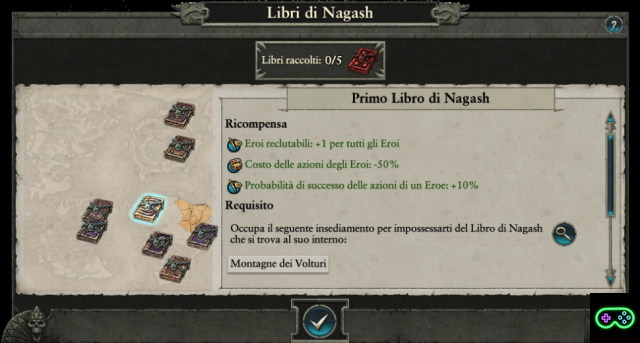
- Vasi Canopy:
The priests of the funeral cult celebrate their rites using vessels containing the organs of powerful warriors.
Each faction of Tomb Kings will have a specific counter for these vessels, which will be obtained through dilemmas, special buildings, military victories, rituals or characters.
These vessels will be used as currency for the funeral cult purchases.

- Funeral Cult:
After obtaining the canopic jars, these can be spent to purchase some items available in the funeral cult brush, located next to the ritual brush.
The cult offers the possibility to purchase any type of object (weapons, armor, talismans, etc. ...), of any level of rarity. The higher the value of the object, the higher the price, and for most of the objects it will be necessary to procure some specific commercial resources through direct production or trade.
All purchases can be made any number of times, with the exception of some unique items which will only be provided once.
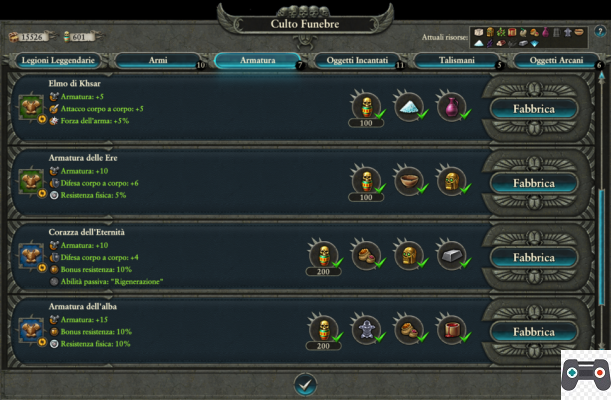
- Dynasty:
Through technological research, the kings of the tombs can enlist the help of the rulers of the ancient dynasties that made Nehekhara great.
Each branch of research is specific to a particular dynasty, and in addition to unlocking the ability to recruit a new army, it provides the king of that dynasty as a legendary recruitable lord with various unique traits and abilities.
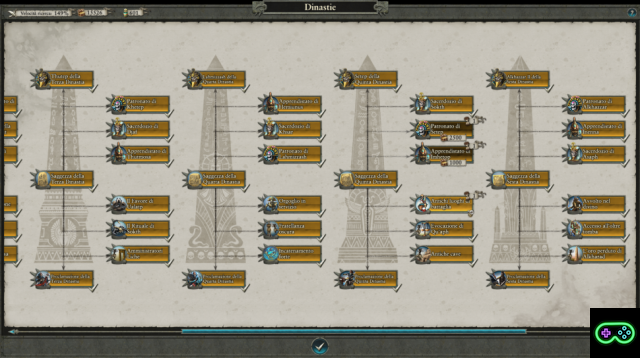
- Kingdom of souls:
The followers of the cult have a very close relationship with the kingdom of souls, the afterlife of the kings of tombs.
During each battle, the tomb kings factions will have a casualty indicator, similar to that of the Dark Elves.. When certain thresholds are reached, skeleton units activate a powerful healing ability, which can also bring fallen fighters back to life.

- Nonmorti:
All units and characters of the Tomb Kings are undead, which means that they treat the loss of discipline differently from other races. When an undead unit's discipline drops near 0, instead of routing the unit begins to take continuous damage over time, which continues until discipline is recovered or the unit dies. When discipline is extremely bad that a unit would normally suffer an unrecoverable rout, the unit instead takes severe damage at a rate that will almost certainly kill it in moments.
Army Mode:
- Marching
- Ambush
- raid
- Channeling
- Hidden in the Sand: a mode similar to the camp, which allows the reintegration, the global recruitment, also guaranteeing some bonuses.
Recruitment Mode:
- Local
- Global (when in a Settlement or Hidden in the Sand mode)
Settlement conquest mode:
- Occupies
- Raid
- Raze to the ground
Initial game phase
Starting a campaign with Tomb Kings can be challenging even for veterans of the Total War series, due to the unique mechanics of this faction.
Having no recruiting or maintenance costs for troops, each lord will always be able to go into battle under the command of many soldiers, but unconstrained recruitable units will be of very low quality. In a battle with an initial army of a neighboring faction, therefore, it is possible to find yourself at a strong disadvantage on several occasions, and it will be necessary to carefully identify the most promising territories to be subjugated in order to immediately build buildings of the military branch.
As with other factions that do not immediately have solid units (for example the Skaven) it can be profitable to declare war on one neighbor at a time and count on an overwhelming numerical advantage to neutralize the less fortified settlements. Suffering major losses will never be a problem, being able to count on constant and free recruitment; the important thing will be to safeguard your lord and your heroes, so that they increase their level.
It is not advisable to draw weapons against overly strong enemies or overly fortified positions.
After taking possession of a new province, it is a priority to immediately build military buildings and recruit the best troops available.
Development
By steadily progressing to conquer one territory at a time and after unlocking the first performing troops (such as the Ushabti), the top army will be able to stand up to a medium-power opponent, and with a second lord at your side you can choose with greater certainty, more profitable objectives.
In addition to the absolute number of settlements in their possession, as already mentioned necessary for the recruitment of the best troops, it is necessary to take into account the great advantage obtained from the construction of the pyramids of the kings of the past. In general it is very convenient to expand, being able, in the deserts of the north of the Southern Lands, both for the climatic advantages (see the Geography and Climate chapter) and for the possibility of unlocking these cornerstones.
For victory in this campaign, it will not be necessary to extend your control far beyond the desert, unless you have to reach one of Nagash's infamous books.
Final phase
After erecting the mausoleums of the undead caste and developing a great recruiting capacity, the game will be able to stop in a defensive strategy, aiming only at specific attacks to obtain Nagash's books for a quicker conclusion of the campaign.
Alternatively, the expansion can be continued with a "wave" strategy.
An army equipped with elite constructs and units could still be severely strained from a confrontation with a quality opposing side, having to then require a brief tactical retreat behind its lines to unite the decimated units and recruit new ones for free. The undoubted advantage of recruiting can therefore also be used in the very front line, continuing to engage enemies to wear them out with skeletal infantry armies before they can organize a good defense.
Our flagship armies, assisted by powerful legendary lords, will instead be able to face multiple consecutive battles, supported by their own magic and by the artifacts with which the heroes will be equipped.
Battle Tactics
Strengths:
- Continuous, free and unstoppable recruitment
- Great monstrous options
- Extreme variety of giants
- Good war chariots
- Discrete knowledge of magic
Weaknesses:
- Limited artillery park
- Low-performing infantry early stage
- Poorly incisive flying options
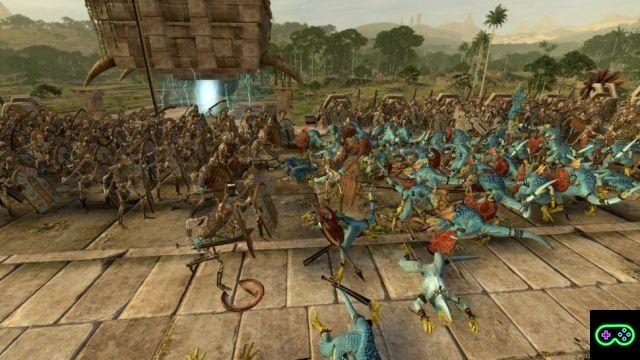
Use the Tomb Kings
As with the factions of the Vampire Counts, the deployment of the Tomb Kings must ensure the safety of their lord, as his fall would result in a drastic decline in the discipline of the troops and their consequent disintegration.
During the initial phase, the game takes on a relatively complex connotation: the fragility of the initial troops forces a very careful use of knights and archers, to inflict as much damage as possible before the warriors are sent back underground. Since the troops that can be recruited without limit are underperforming, it is possible that the first battles end in an honorable defeat, after having weakened the enemy forces. However, the undead factions will be able to revive their warriors immediately afterwards and counterattack after a defeat to reverse the context after a few turns. In general, the troops will do their best in the long run.
The late stage features a simpler game mode. The weak but eternally loyal skeletal troops can hold their foes for a long time as Ushabti and greater constructs break through their ranks and wreak havoc on heroes. The armies of the maximum tier may not make use of the artillery, which is not very incisive, and take advantage of the most varied combinations of troops, based on the need induced by the limit of quality troops.
From this point of view, being unable to fill their armies with the last unit unlocked but having to recruit based on what the buildings offer, the Tomb Kings will be able to offer a different and varied experience from lord to lord, forcing players to try new and fun strategies for each of them, based on the troops they have been able to recruit and the characteristics of the lord in command.
Confront Nehekhara
Tomb Kings suffer from two substantial weaknesses: the first, as already mentioned, concerns the disintegration of the units when they lose their discipline. A double-edged sword, but which can be exploited by an opponent to eliminate uncomfortable groups with a sudden and concentrated pressing.
The second weakness consists in the fact that all the valuable units are large, and they lend their side to lancers, halberdiers and other troops who see their attack soar against enemies larger than simple infantry. Neutralizing an undead army may therefore not be too difficult, if you have the time and means to compose ad hoc units.
As for the campaign, however, the best tactic is to destroy or conquer the recruiting poles of Nehekhara, so that they cannot restore their ranks after a conflict. Stopping the production of constructs by one of these factions is equivalent to definitively overturning the hourglass of the Tomb Kings, condemning them to a certain defeat.
Best Units
- Ushabti
The first constructs available on the Tomb Kings roster are the Ushabti, large statues of anthropomorphic animals available as both melee and shooting units.
Their high armor value and mass and make them quite durable, but they don't stand out in offensive values as much as the Beastmen Minotaurs do. To be used mainly as a defensive unit.
- Tomb Scorpio
The deadly Scorpion of the Sepulchres has a very special attack pattern, with which he literally dives into the middle of the enemy formation, knocking down soldiers and breaking their ranks.
The thick armor of the scorpion's carapace is capable of long-lasting defense while inflicting heavy damage with its high attack value and its bonus against infantry. However, it is not recommended to send it against opponents with penetrating damage, as it places itself in the center of enemy units, and is therefore surrounded by them.
- War Sphinxes and Necrosphines
These majestic quadrupedal constructs offer a monstrous infantry approach (agility, acceleration, charge bonus) even with the mass of a giant. The level of danger of War Sphinxes is really relevant when facing infantry, while Necrosphinxes can deal more easily with large units, and are undoubtedly more solid.
A balanced army will not tend to make use of both of these units, preferring the one that harmonizes best with the rest of the composition.
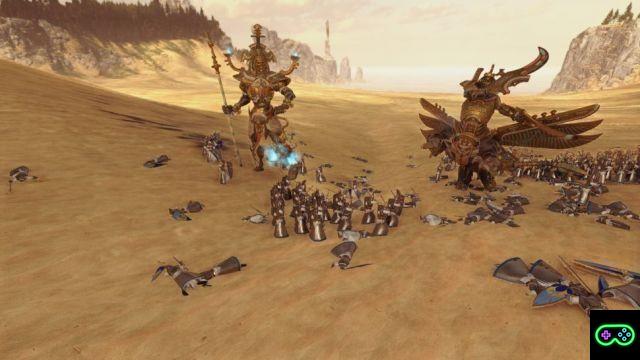
- Ierotitano
Unlike a mere giant, a Hierotitan adds to his physical skills an ability that increases the reload speed of the winds of magic and two basic spells (Drain Spirit and Shem's Fiery Gaze).
However, these abilities do not allow for effective confrontation with flying units, but in the absence of a mage in the army, it also allows you to spend the offensive potential of the magic.
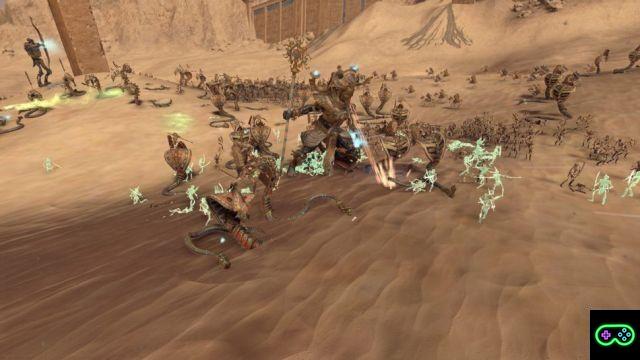
- Giant of Bones
The Bone Giant is a monstrous shooting giant unit, armed with a huge bow. Like all giants, he has a natural predisposition for close combat which guarantees him some use even when the ammunition is depleted. However, he gives his best when firing on enemy lords or artillery from a distance, significantly lowering their health points before the melee phase.
Continue reading with the next article Focus 6: Costa dei Vampiri
Go to previous article Focus 4: Skaven




